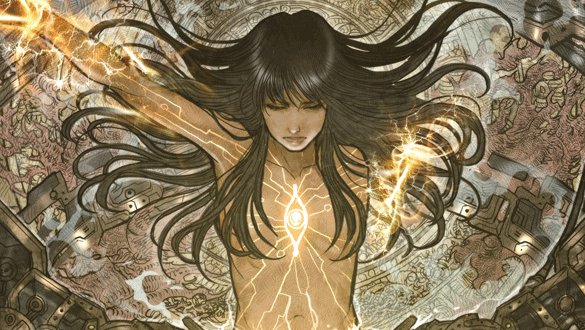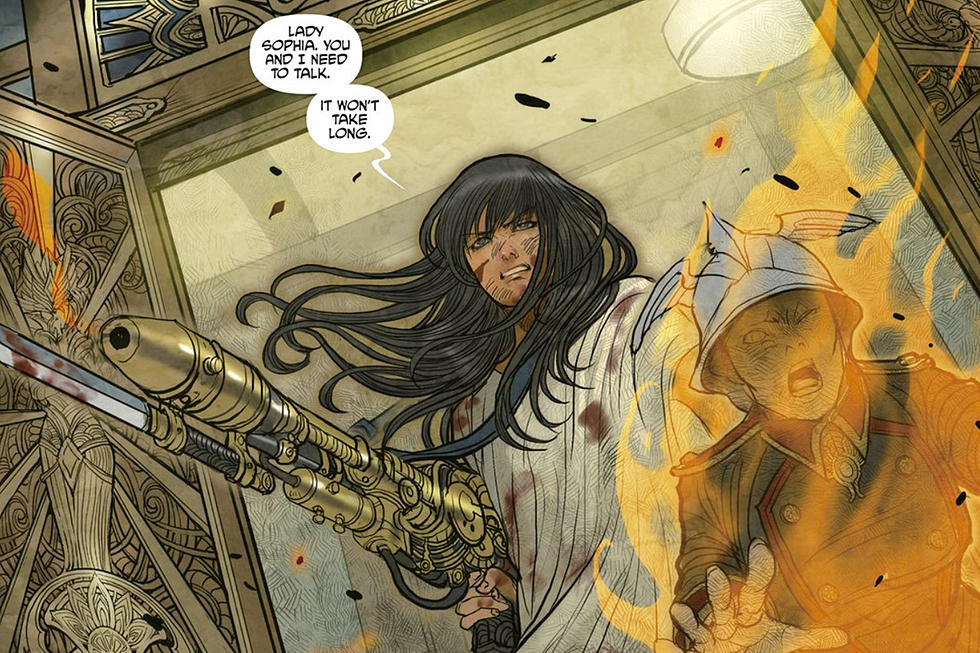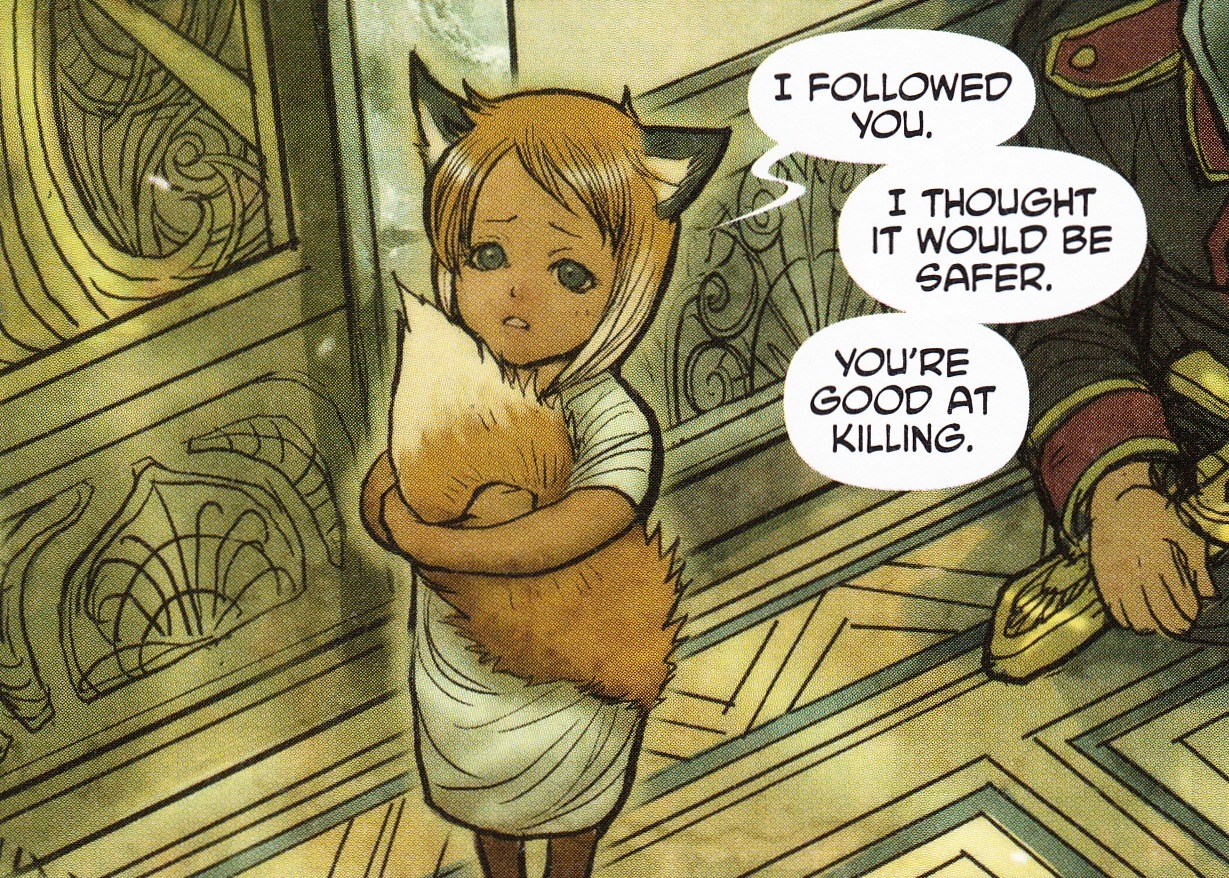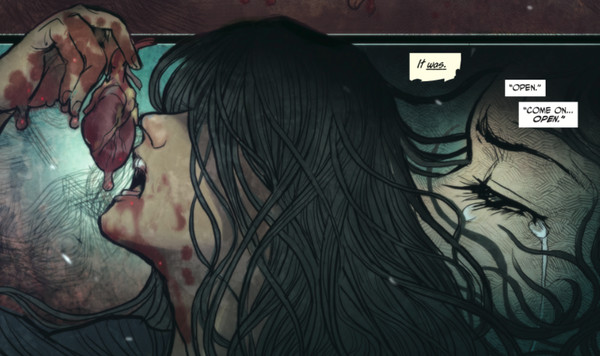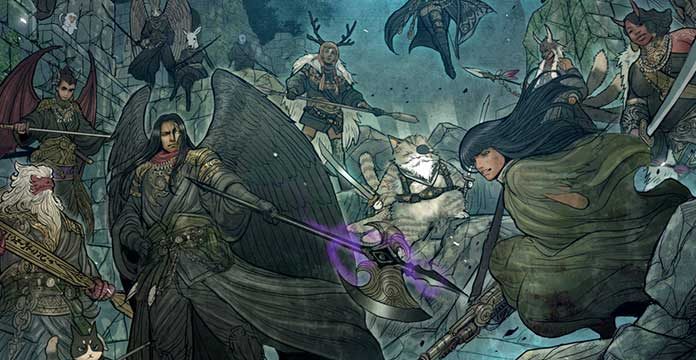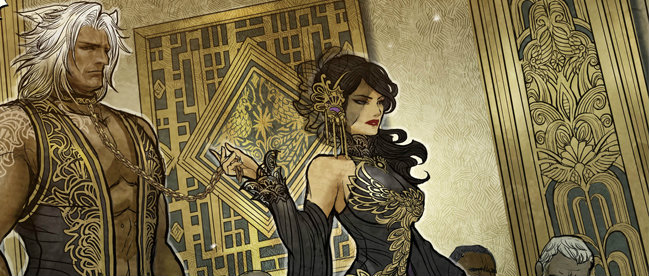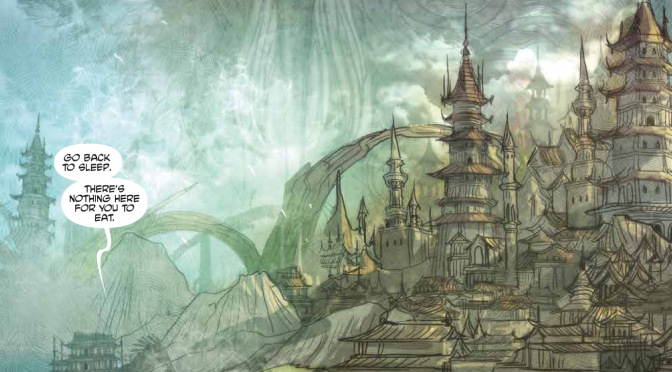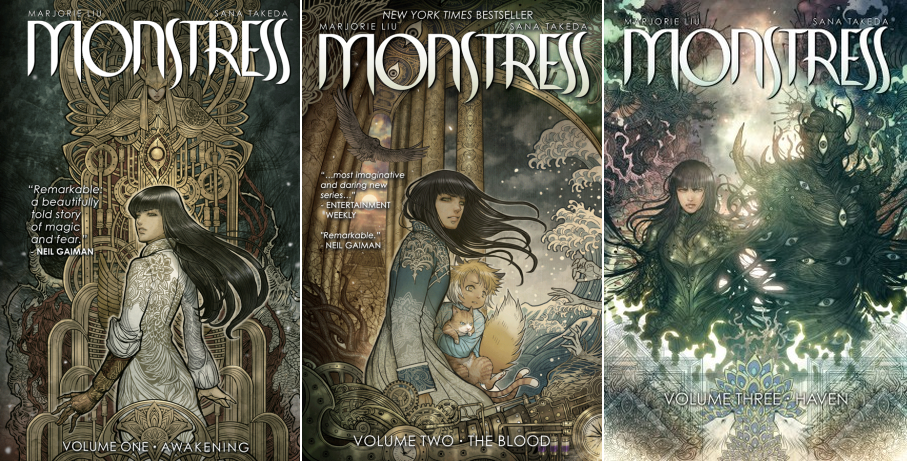Recommending Monstress
Although Japanese manga, Korean manhwa, and American comic books are practically the same thing – narrative sequential art integrating text – I know from experience that manga and anime fans may not be aware of specific American comic books. The estrangement between manga fans and comic book readers isn’t as perplexing as it may seem. Stylistically Asian comics tend to be vastly different in aesthetic, tone, and narrative construction than typical American comics. But one particular American comic book series that manga fans may be unfamiliar with is a rare exception. Monstress, written by half-Taiwanese novelist Marjorie Liu and illustrated by Japanese artist Sana Takeda, is a groundbreaking and exceptional original American comic series that stylistically draws heavy inspiration from manga and anime and exists as a sort of greatest manhwa ever that isn’t technically a manhwa.
Launched in November 2015, Monstress is an epic fantasy set in a Final Fantasy-esque world of magic, eldritch gods, arcane races, talking animals, humanoid animals, steampunk technology, and a pervasive threat of violence, bloodshed, and war. Teen girl Maika Halfwolf, who lost her left arm fighting in an apocalyptic magic war, sees the world strictly as a cold and cruel environment that she must survive at any cost, with few allies and fewer friends. During her search for clues about her long-lost mother, Maika’s body becomes partial host to Zin, an ancient god, a maleficent shroud of flesh-eating tentacles that consumes flesh and blood to survive. Maika struggles to co-exist with her symbiote, at times desperate to restrain its thirst for death and destruction while in different circumstances completely amenable to allowing it to satiate its grotesque desires. Maika’s solitary loyal companion is a child wolf-girl, a freed slave who is terrified of Maika’s monstrous personality yet indebted to Maika for saving her life. The fascinating wolf child Kippa serves as Maika’s traveling companion and conscience, reminding Maika of what humanity entails and constantly just barely keeping Maika from succumbing to chaotic madness.
Comparable to the best examples of high fantasy, Tolkien’s Middle Earth, Martin’s Song of Fire & Ice, Nahoko Uehashi’s Seirei no Moribito, Liu & Takeda’s Monstress occurs in a rich and complex world with thousands of years of history, multiple cultures and customs, and diverse races. The comic series’ cast is massive, yet thanks to rich characterizations, even minor supporting characters feel unique and memorable. In this complex, amoral world in which humans are a seeming minority, every character has personal motivations and desires, resulting in unpredictable plot twists and shocking revelations. No one trusts others because no one can be trusted in this self-serving world.
Marjorie Liu’s writing subtly depicts a matriarchal world. Women rule the world of Monstress, yet their thirst for power, conquest, and domination is arguably even stronger than a patriarchal society’s. Unlike typical American comics designed in monthly segments, Monstress is structurally closer to manga in the sense that it’s a single ongoing story. The narrative throws readers into the deep end from the outset, and the storytelling only gets deeper and more complex as it unfolds. The spoken dialogue is naturalistic yet appropriately unique to its fantastic setting. However periodically especially Maika relies on crude obscenities, harsh words that initially seem anachronistic and incongruous. Yet once the reader gets used to the fantasy environment, the odd breaks in the dialogue, the unexpected sudden exclamation of the “F” word, actually reinforce the oddly chaotic and anachronistic world setting. Suddenly hearing words that we, as readers, don’t expect, words that sound out of place, reminds us that the entire world of Monstress is an unpredictable place in which cultures and concepts collide.
Sana Takeda’s illustrations more closely resemble the ultra-stylized art of acclaimed Korean character designer Hyung-tae Kim than typical Japanese manga, and the art looks nothing at all like any other American comic book. Takeda’s art is rich in depth and atmosphere, vividly evoking a constant sense of foggy ruins, decrepit wastelands, shanty cities, ancient crumbling kingdoms, and rough, uncharted seas. The art is frequently as suggestive as it is intricately detailed, yet Takeda is also fully committed to tastefully revealing the bloody mayhem and gore that her world is capable of. Takeda also masterfully uses color, perspective, and framing to give Monstress the epic, cataclysmic scale that it requires on occasion. Anime inspirations including superhuman speed, elaborate magic effects, ornate costumes and weapons, and grand, earth shattering conflicts are all completely natural in the pages of Monstress. Thanks to Takeda’s colorful art, readers are as immersed into the still pages of the comic as any cinematic anime.
Japanese manga frequently indulge a sense of adolescent innocence, express a tone of empathic engagement to juvenile readers. Monstress is a rare exception in the regard that it reads more like an objective high fantasy novel. Monstress isn’t a story that readers imagine themselves part of; it’s a story that readers marvel at and become enthralled by. It’s a tremendously compelling story told with resolve. As engrossing as Monstress is, it’s not a cuddly, warm, happy tale by any means. The highly literate approach to Monstress has earned the comic series the 2017 British Fantasy Award and Hugo Award for best comic series, five Eisner award nominations in 2016 & ’17, and five just-announced 2018 Eisner awards including recognition for Best Continuing Series, Best Writer, and Best Interior Artist (in painting/multimedia).
Monstress is relatively unique because it has the setting and narrative of a shoujo or shounen manga, but it’s written with the maturity and objectivity of seinen manga. The highly stylized art is likewise unconventional because it more closely resembles Korean manhwa than either typical manga or American comics. However, while typical Korean manhwa have phenomenally intricate art, they typically exhibit weak writing. Monstress is a rare exception that looks like an amazing Korean manhwa and actually has scripting of equally high caliber. Because the story is so interwoven, richly complex, and ongoing, it doesn’t offer easy jump-on points. In order to comprehend the full weight and significance of the story’s characterizations, relationships, and references, readers must start at the very beginning of the story. Presently the series spans three story arcs over 18 issues with a double-length first issue. As of this writing, the story is taking its second publication hiatus. The 19th issue is due out this winter, allowing new devotees plenty of time to discover and immerse themselves in the story that’s presently available.
